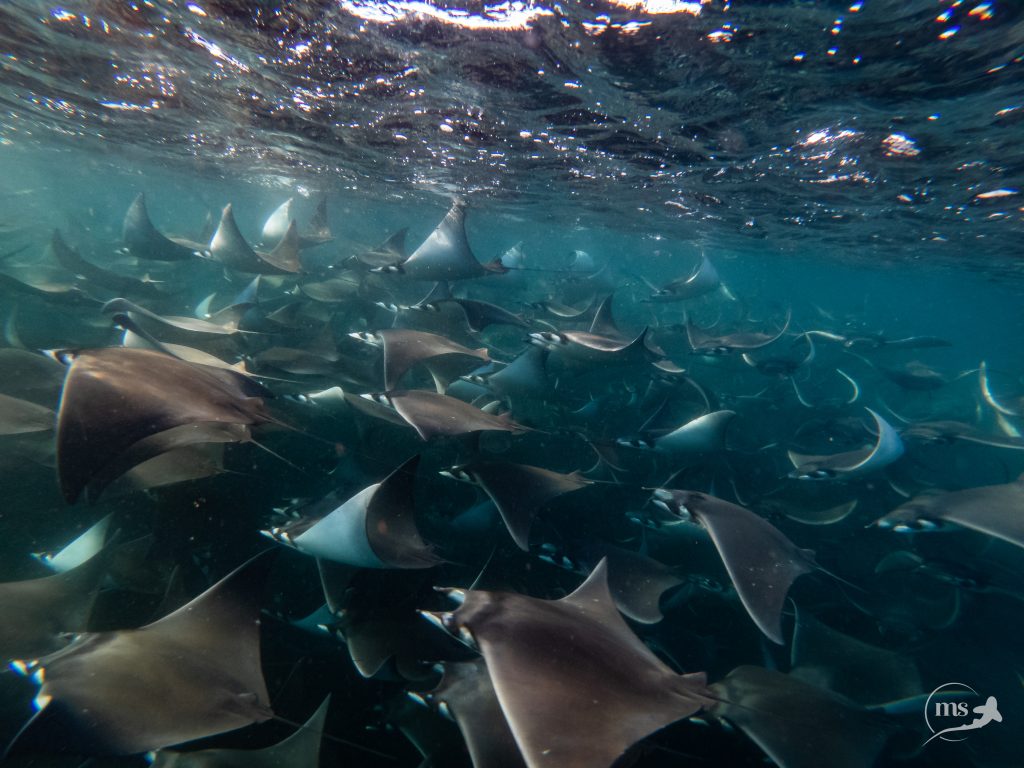
It is that time of the year again! Every spring we have a very special gathering in our front yard: thousands of rays aggregate in a breathtaking spectacle. They are Munk´s pygmy devil ray or Mobula munkiana, locals know them as “tortillas”, because the sound they make when jumping out of the water, reminds the clapping of hands produced while making tortillas.
They are cartilaginous fish, related to sharks, and they inhabit the Eastern Pacific Ocean, from Mexico to Peru. They reach a maximum disc length of 4.2 ft (130 cm), with an average of 3 ft (100cm). They are filter feeders, and they follow the zooplankton blooms, moving around the Baja peninsula with them. This time of the year, they can be seen in our area, when the conditions are ideal for feeding and reproduction. All around the bay, they can be seen swimming gracefully in the water, hundreds of them together, moving their fins like birds flying, it is truly nature´s wonder. But they can also be seen out of the water: moving their wings and gaining enough momentum to propel themselves in acrobatic jumps, sometimes many of them at the same time. Nobody knows exactly why they jump, there are different theories, but I like thinking it is just pure joy.
For years they were fished till they were put in severe danger of extinction. They are very sensitive to overfishing because they have slow reproductive strategies, like many other cartilaginous fishes. They are aplacental viviparous and they only give birth to one pup, after a gestation period of 12 months, so it takes them a long time to recover after the removal of many individuals. Now they are protected, and we have seen increasing numbers, but they are still listed as vulnerable in the IUCN Red List. One of their main threats is bycatch from coastal fishing nets. Swimming with them is a great attraction for ecotourism, making them way more valuable alive than dead and favoring conservation efforts.